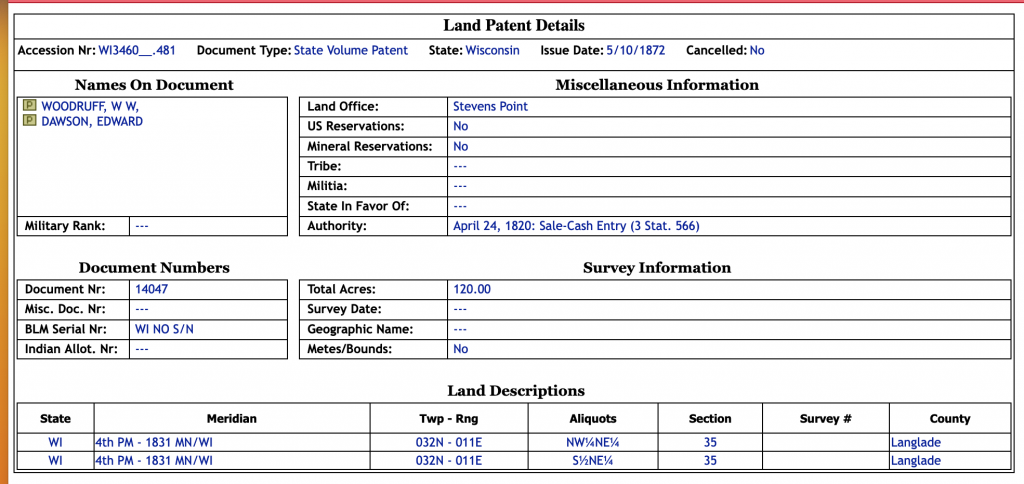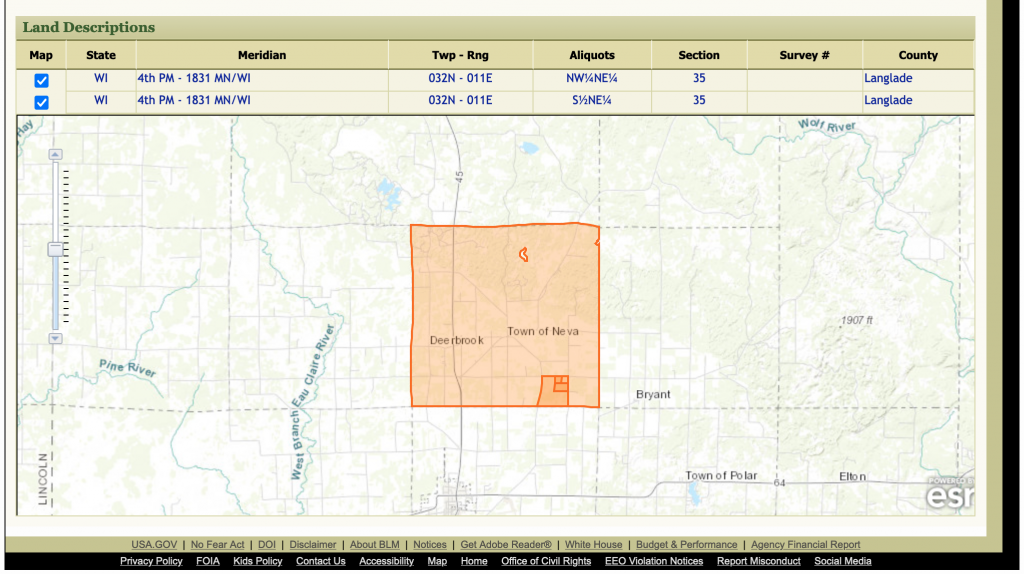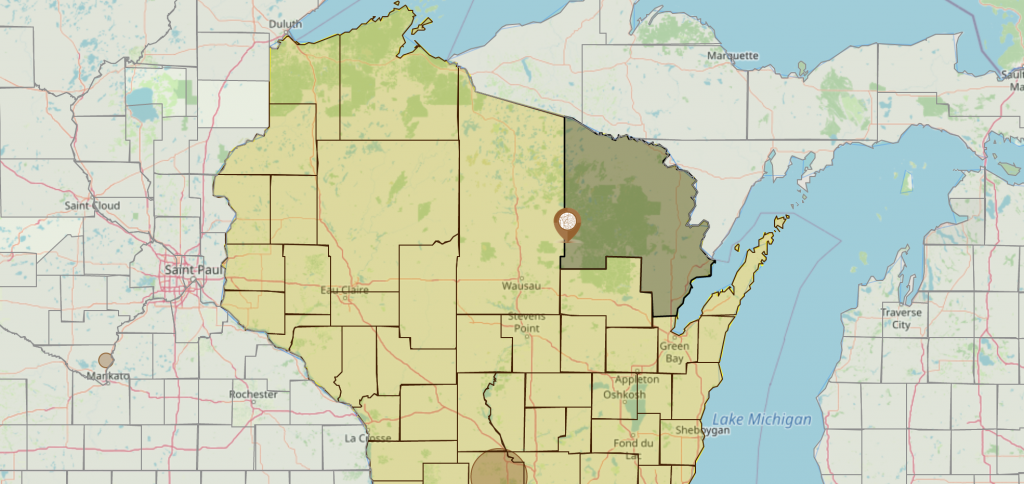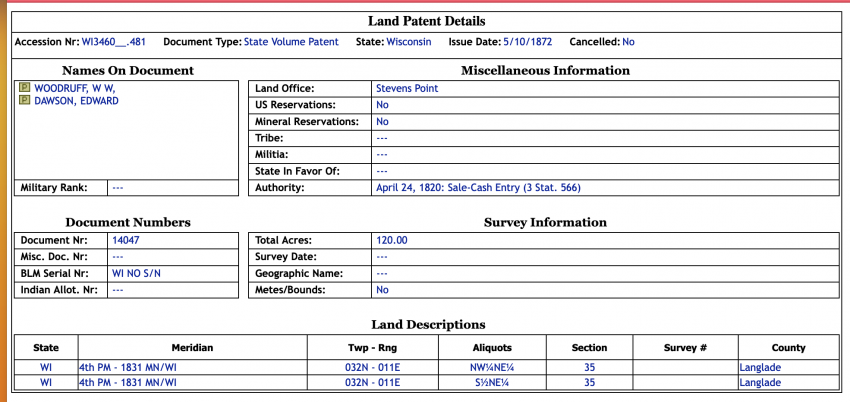Although AniMap is historical mapping and the history of county boundary changes, it is also about family and local history. Without history there cannot be programs like AniMap nor can there be genealogy. The historical story is what makes these two reality, something worth reading and learning about.
We can see local history is not as accurate as we sometimes think on the surface. I often refer to this type of history as being the “Norman Rockwell” of history as people try putting their first foot forward. No one wants to admit the struggle people really face.
In 1922, Robert Dessureau writes on page 219
Deerbrook, situated on the main line of the Chicago & Northwestern railway, was named by Edward Dawson, timber cruiser and prospector, who, while camping near the Eau Clair river watched the deer “drink his fill” each morning just as the sun peeped over the hills proclaiming a new day. Thus he called it “Deerbrook,” by which it has since been known.
Doesn’t that bring a perfect picturesque of a moment in time. On page 215, Dessureau wrote
Edward Dawson and Thomas Vohasky were the first inspectors of Election in Neva Township.
I found this troubling and interesting as Dessureau makes no connection between the Edward Dawson who named Deerbrook and the Edward Dawson who was one of two first inspectors of elections.
Not making the connection could be the result of how information was obtained in his work on the History of Langlade County. Information could be compiled from various sources and then written in the finished work. Dessureau would not have fact checked or cross checked much of the information in this case.
For six years I’ve searched high and low. Many different historical societies and other resources to no avail. No Edward Dawson had been found mentioned in anything I’ve encountered. Often historical societies response has been “you already know more than we do.” Yes, they are mostly volunteers with a passing interest in history and I am one searching to write a well sourced history of Deerbrook. The very reason it is still not complete.
A break finally came. On 10 May 1872, W. W. Woodruff and Edward Dawson were given a land patent containing 120 acres, located in Township 32 North, Range 11 East. This will become the Town of Neva, filed on 19 January 1883. So it would appear an Edward Dawson did have land in the Town of Neva, 11 years before there was the Town of Neva.


The map is difficult to read. The land patent included the small area to the left and the bigger area under the two smaller ones. Each of the small parts being 40 acres and the larger one being 80 would amount to 120 acres.
To better understand where this land was in 1872, see the maps below from AniMap as we can see the historical changes to understand the evolution of where Deerbrook it today.

The map is Oconto County from 15 Mar 1860 up to the creation of New County on 3 Mar 1879. The Edward Dawson patent date is 10 May 1872. AniMap shows at the time the patent was obtained the land was in Oconto County.
Considering the only definitive date I have for Deerbrook to determine when it was organized, rests in a news article dated 10 Nov 1881 that ran in the Green Bay Press Gazette announcing the Milwaukee, Lake Shore & Western rail way is complete to Deerbrook and Kempster, Wis.
I am certain the Green Bay Press Gazette did not confuse Deerbrook with either the Village of Neva or Reeve. Reeve was not platted until 1886, five years after the rail arrived at Deerbrook. All histories that write “Deerbrook, formerly known as Reeve” are false. By date this is not possible. Nor could Deerbrook be formerly known as the Village of Neva; as the Village of Neva was platted in 1887 right over where Deerbrook is today. Again, this narrative would be false. Yet in every history this false narrative is repeated over and over again.
IN 1922 Dessureau states on page 58
The first murder case brought to the attention of the Langlade County Circuit Court was during the March term of 1886. Mrs. Mary Chadek of Reeve (Deerbrook) was charged with killing her husband, Thomas Chadek.
In Glimpses of Deerbrook, written by Martha Lucas in 1954, on page 7 we read
Beginnings of the Village of Neva – Deerbrook
She goes on to state
The State of Wisconsin in September of 1884 granted Charles M. Upham the land that was platted as the Village of Neva…
Two major things to point out here, the State of Wisconsin can issue no land grants as Wisconsin is a Federal Land state and all land grants (patents) were issued by the federal government, not the state of Wisconsin. Second, the BLM (Bureau of Land Management) has no record of land issue to Charles Upham in 1884.
In the section Lucas talks about Reeve, she mentions James T. Reeve and his wife selling the right of way to the railroad. I’ve always wondered how that worked for them, selling the railroad a right of way they owned since 1881.
It seems both Dessureau and Lucas didn’t know about the news articles of many Wisconsin cities that announced rail service to Deerbrook and Kempster in November of 1881.
I may be able to eventually wrap my head around Deerbrook being one the rare instances a community may have relocated; however I will not buy the story that a railroad moved the tracks. I could be wrong, however, even though history is wrought with 1910 to around 1930 being years houses moved from one location to another as quick as you could change your clothes, I do know tracks were not moved.
What we have then is this, 1881 rail service for both freight and passengers was in Deerbrook and Kempster in 1881. At some point after that per Dessureau and Lucas, Deerbrook was Reeve and the Village of Neva.
In the meantime, people can keep repeating false narratives of these two people while I finally have proof of an Edward Dawson in what becomes the Town of Neva in 1872. I also now have the name of a partner, W W Woodruff giving me one more avenue to break through this brick wall I have been beating on for 10 years now.

